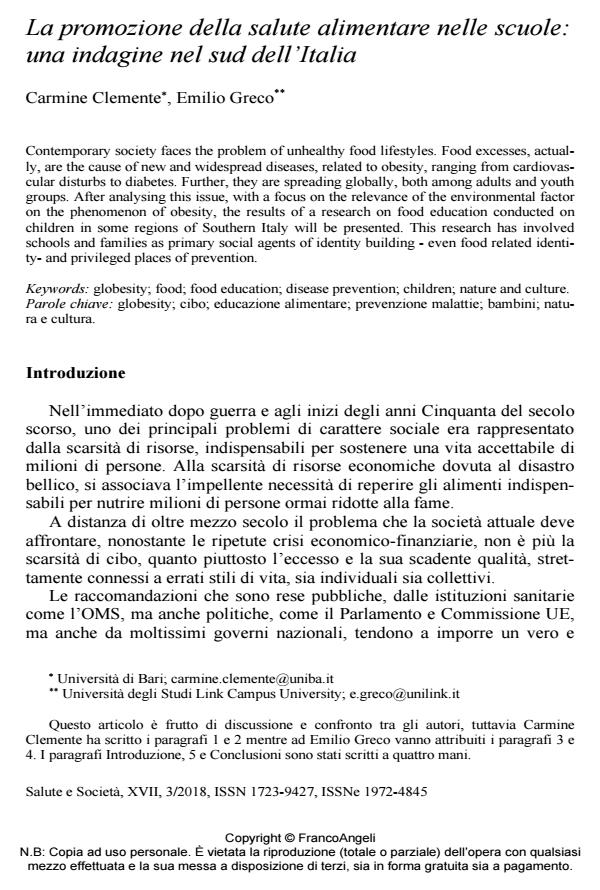La promozione della salute alimentare nelle scuole: una indagine nel sud dell’Italia
Journal title SALUTE E SOCIETÀ
Author/s Carmine Clemente, Emilio Greco
Publishing Year 2018 Issue 2018/3
Language Italian Pages 15 P. 103-117 File size 163 KB
DOI 10.3280/SES2018-003008
DOI is like a bar code for intellectual property: to have more infomation
click here
Below, you can see the article first page
If you want to buy this article in PDF format, you can do it, following the instructions to buy download credits

FrancoAngeli is member of Publishers International Linking Association, Inc (PILA), a not-for-profit association which run the CrossRef service enabling links to and from online scholarly content.
Contemporary society faces the problem of unhealthy food lifestyles. Food excesses, actually, are the cause of new and widespread diseases, related to obesity, ranging from cardiovascular disturbs to diabetes. Further, they are spreading globally, both among adults and youth groups. After analysing this issue, with a focus on the relevance of the environmental factor on the phenomenon of obesity, the results of a research on food education conducted on children in some regions of Southern Italy will be presented. This research has involved schools and families as primary social agents of identity building - even food related identity- and privileged places of prevention.
Keywords: Globesity; food; food education; disease prevention; children; nature and culture.
Carmine Clemente, Emilio Greco, La promozione della salute alimentare nelle scuole: una indagine nel sud dell’Italia in "SALUTE E SOCIETÀ" 3/2018, pp 103-117, DOI: 10.3280/SES2018-003008